Hot on the heels of my quilted interpretation of Edvard Grieg’s classical composition Anitra’s Dance from the Peer Gynt suite, chronicled in Part 1, I wanted to get stuck into the next quilt in the series. My next quilt would be the first movement, Morning Mood, a piece of music known even to people with only a passing acquaintance of classical music. Morning Mood epitomizes Romantic era music, painting a picture in the mind. I intended for my interpretation to do the same.
I hoped to use the axioms I developed while making Anitra’s Dance.
Quilt axioms:
- One tessellating shape per bar.
- One colour per chord.
- Adjacent bars in adjacent shapes.
- Not much empty space inside.
- Keep similar parts near each other.
- Everything has to come from my fabric stash.
Morning Mood
The movement Morning Mood depicts the rising of the sun in Act 4 of Ibsen’s play. It is orchestrated for a smallish orchestra, in a mid-tempo 6/8 time. In honour of this, it seemed natural to make the basic unit of this quilt the hexagon. (This turned out to be fortuitous, for it was December and the sewing machine was currently buried under emptied Christmas ornament boxes. I was restricted to hand piecing. Luckily, hexagons are famously easy to hand piece.)
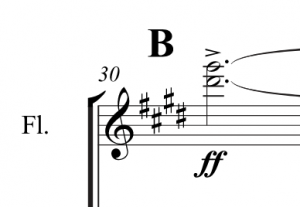
Unlike Anitra’s Dance, Morning Mood has no repeats, so this would be a more linear quilt. Choosing a layout of hexagons would be determined by the lengths of the musical themes in the piece, helpfully marked in the score by the composer.
| Section | FIRST BAR | LENGTH |
|---|---|---|
| Start | 1 | 20 |
| A | 21 | 9 |
| B | 30 | 8 |
| C | 38 | 8 |
| D | 46 | 10 |
| E | 56 | 21 |
| F | 77 | 11 |
Unusually, the musical climax in Morning Mood occurs quite early in the movement, in section A, starting at bar 21. Sections B and C, each in their own key, have glimpses of varying dynamics, but from Section D until the end, the piece dwindles back to its original key in a slow decrescendo. One interpretation is that the first 20 bars symbolize the moments before dawn, section A the moment of sunrise, and sections B and C the sun peeking through low clouds, with the remaining sections symbolizing the end of the golden hour and the beginning of another perfect day.
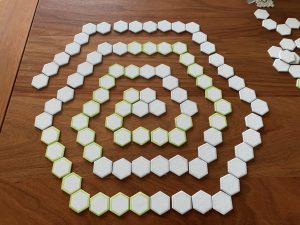
Handily, I never throw anything out. I had some die-cut cardboard hexagons left over from punching out the bases of a GraviTrax construction set, which I’d kept in a ziploc bag just in case. I could arrange these on the table to experiment with layouts. An early idea was to have the hexagons spiral in from the outside to end at the centre, but this violated Axiom 5 (keep similar parts near each other), and the climactic parts (A to C) didn’t even cover a full circle, so it was unbalanced too.
Skyscape
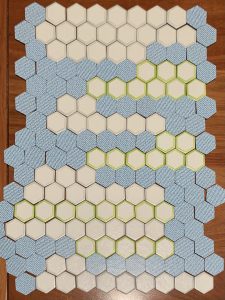
The layout that ended up working best was to resemble a picture of the sky littered with clouds. The path of bars starts at the top left, then drops to the next row, changing direction each row, until it scrapes the ground at the bottom. Each section of the movement is its own cloud.
Harmonically, Morning Mood has stretches several bars long of the same chord (or the same two chords alternating), so the clouds easily form strata. Maintaining these strata was more important than keeping musical phrases together. For example, bars 5 to 8 encapsulate the first key modulation, from E major to G♯ major; the transition happens between bars 7 and 8 so that is where the rows are split.
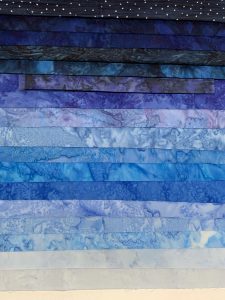
The background became the sky. To show the passage of time from pre-dawn to late morning, kind of a time-lapse, I made the early bars at the top from dark blues, and later bars down the quilt from progressively lighter shades. This would form the backdrop on which the clouds are overlaid.
Colours
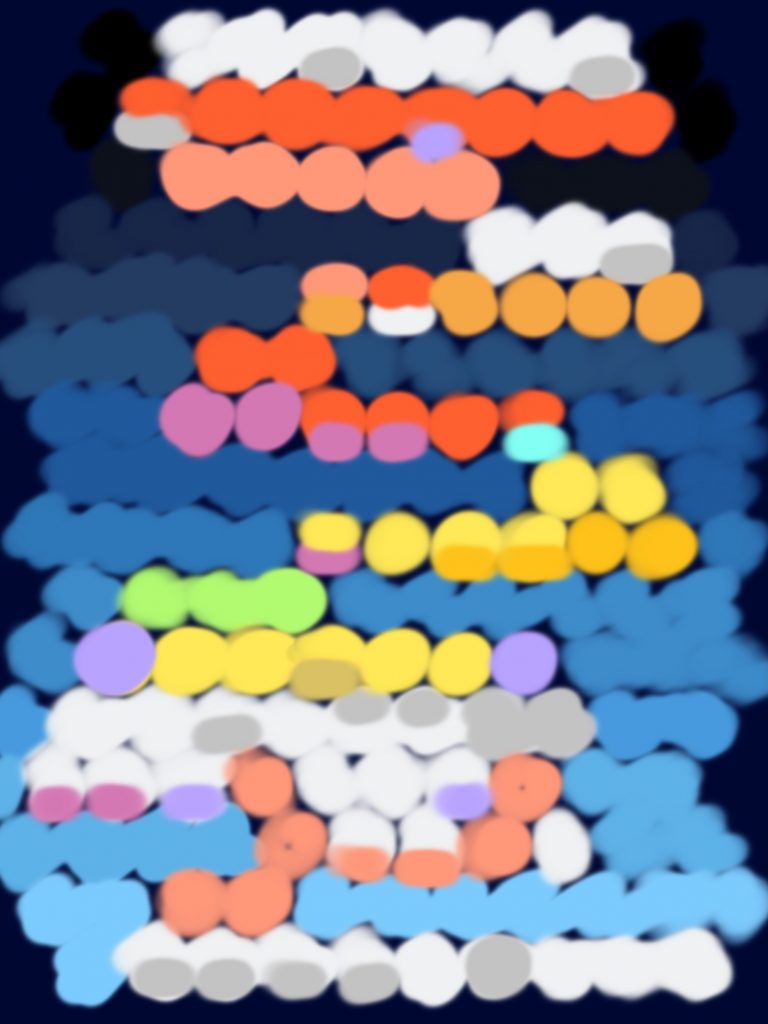
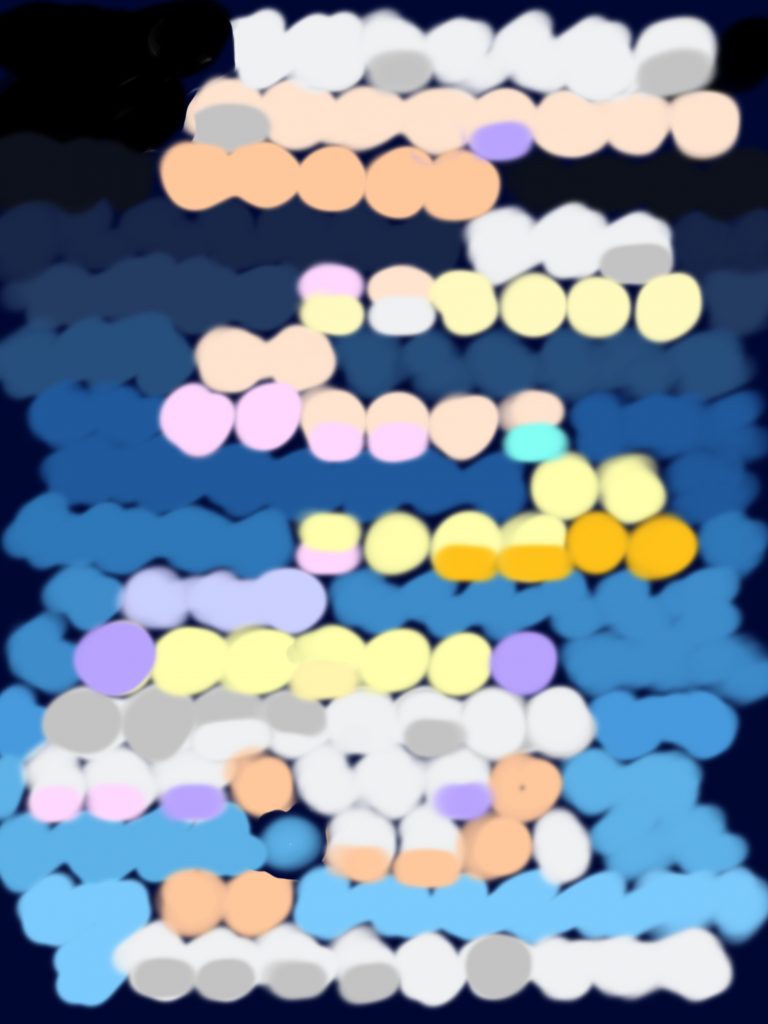
Using Procreate, I sketched a rough colour key, with one chord per layer. This allowed me to choose whether to use a palette of bold colours or of muted ones more typical of clouds. I opted for the bold colours mostly because of Axiom 6 (everything has to come from my fabric stash).
Unlike in Anitra’s Dance, a few bars in Morning Mood start with one chord and end with a different chord. When this happens, it normally happens halfway through the bar, and it is very often a change from a major chord to the related minor, or vice versa. These bars I could make from a fussy-cut hexagon that contained half one colour and half the other. It was an argument for representing pairs of related major and minor chords with the same hue but at a different brightness or saturation, because a lot of my stash is fabric like that.
| E major, C♯ minor | F major, D minor | G♭ major | G♯ major | A major, F♯ minor | B major, G♯ minor | C major | D major |
|---|---|---|---|---|---|---|---|
| white | lemon | goldenrod | raspberry | magenta | watermelon | olive | grass |
| grey | primrose | lilac | carnation |
Diminished and augmented chords, as well as seventh, minor sixth, and suspended fourth chords, were assigned colours or patterns on a one-by-one basis, depending on what I had in my stash.
Construction
This was my first attempt at English paper piecing, a hand-piecing technique which has been used to make quilts from hexagons since the 1700s. I used fabric glue rather than thread basting to join the fabric pieces to the temporary hexagonal templates, and strong polyester thread to whipstitch the pieces together. The hexagons are 5/8″ along one edge, almost the same size as the GraviTrax doughnut holes.
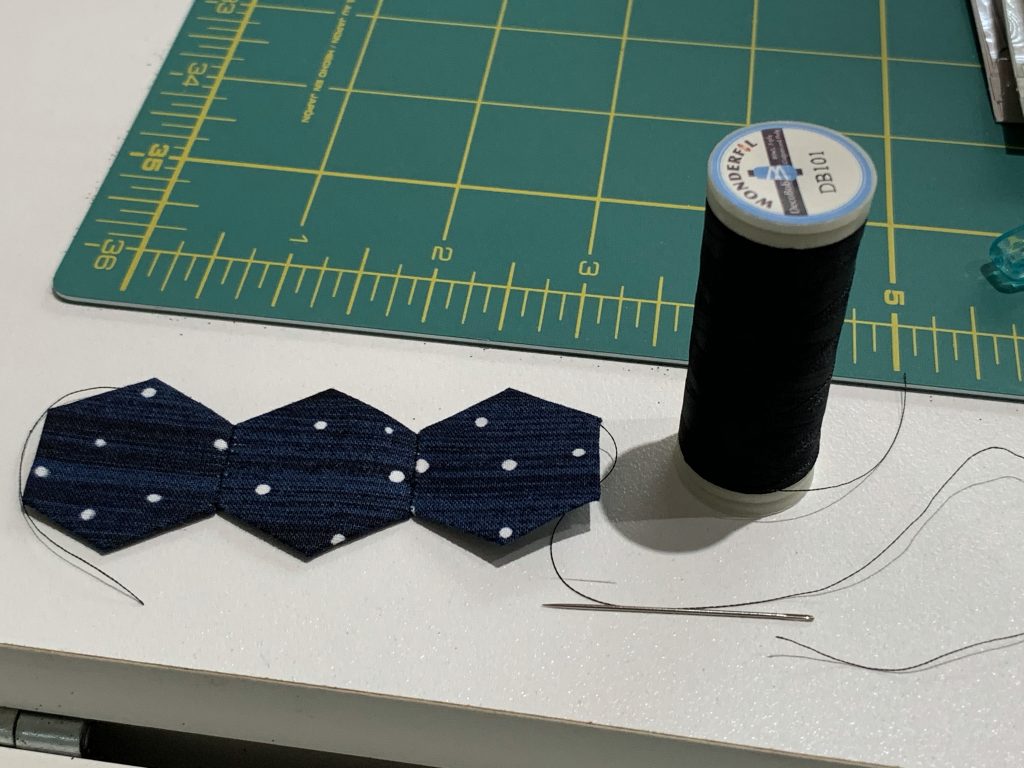
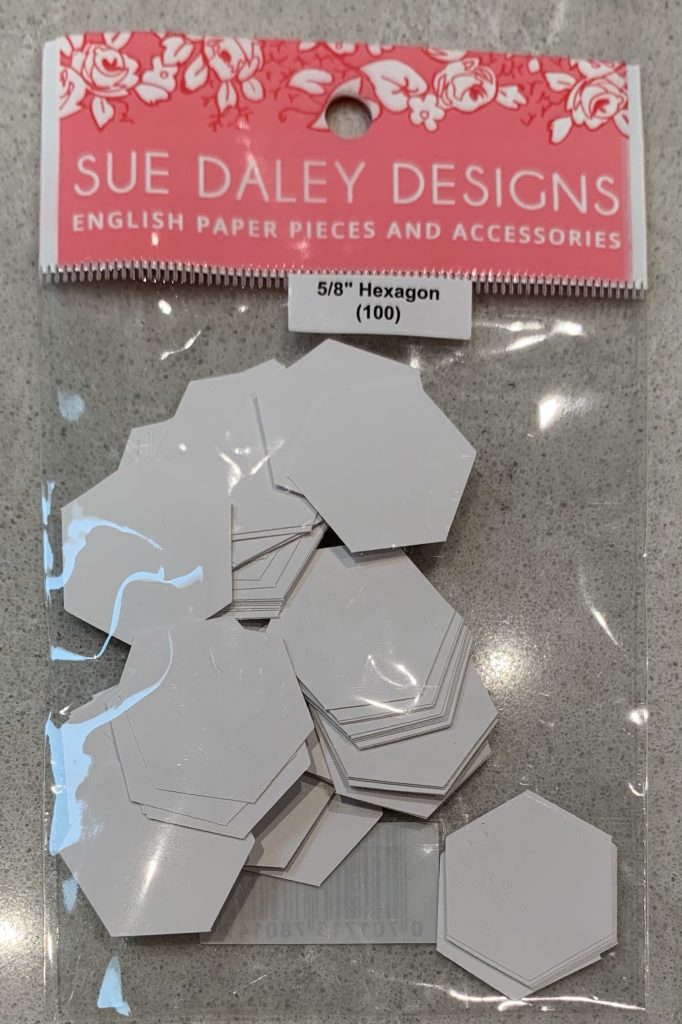
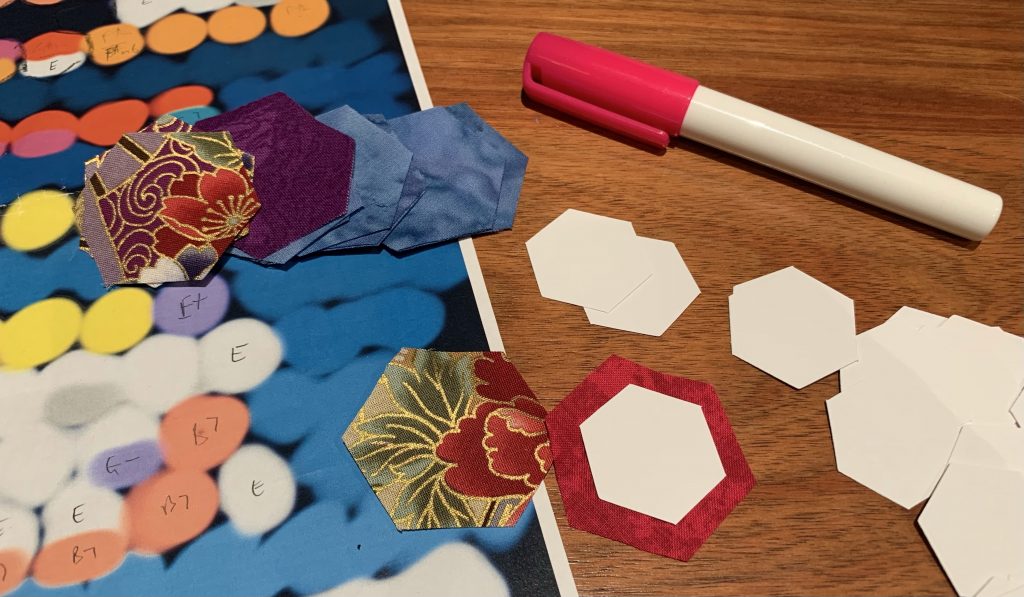
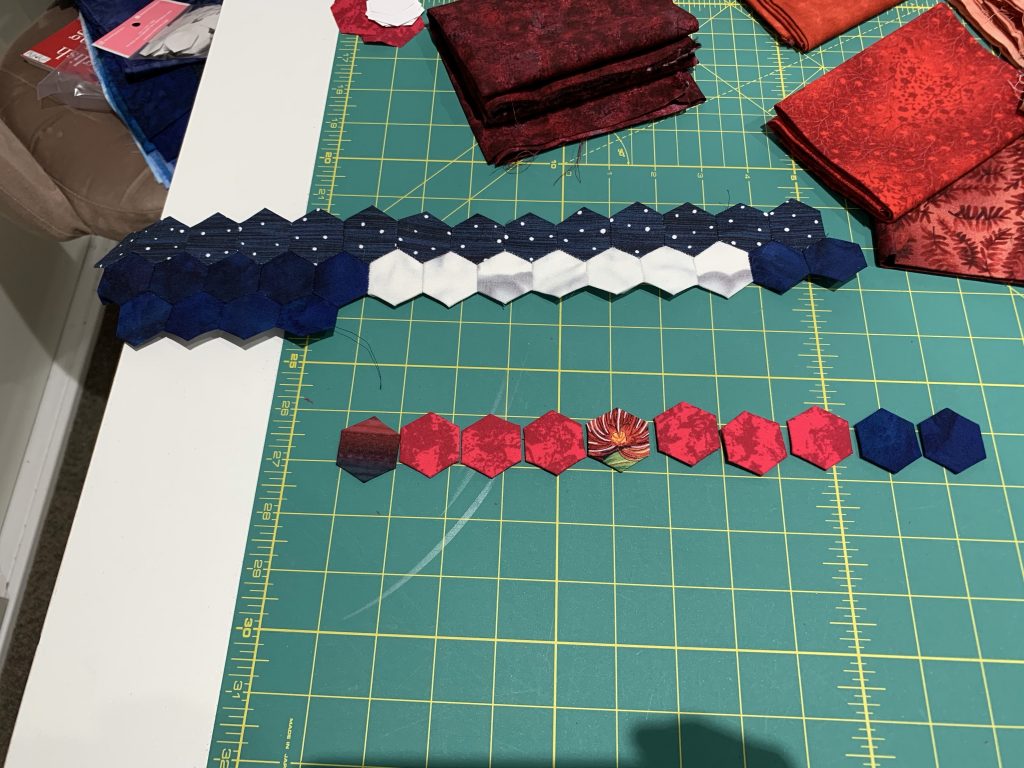
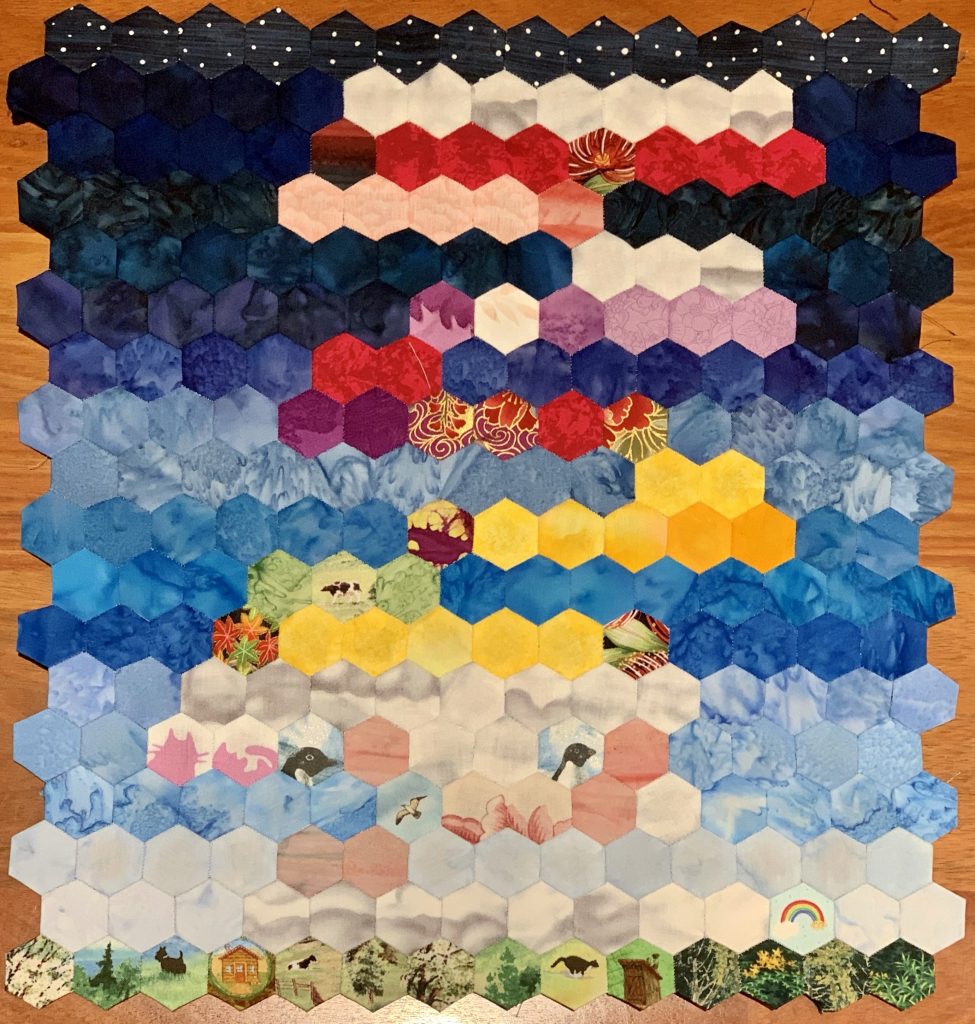
Embroidering and quilting
Towards the bottom of the quilt, the distinction between the clouds and the sky becomes lower. I used embroidery and quilting to enhance the contrast. Each musical phrase is outlined with a faux-hand-quilting running stitch, the colour of which indicates which part of the orchestra dominates: blue for woodwind, yellow for brass, pink for strings, and white for the whole orchestra. (One hex has no quilting on it, because it is tacet.) The sky background is quilted in a dense undulating background to help the foreground to pop out.
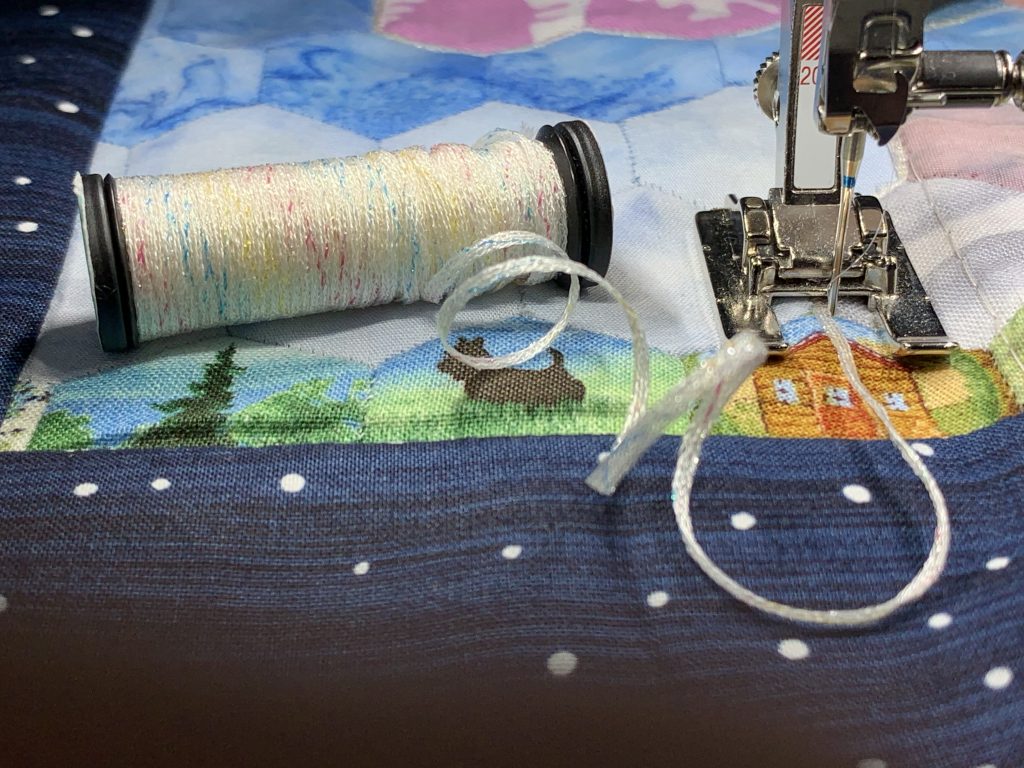
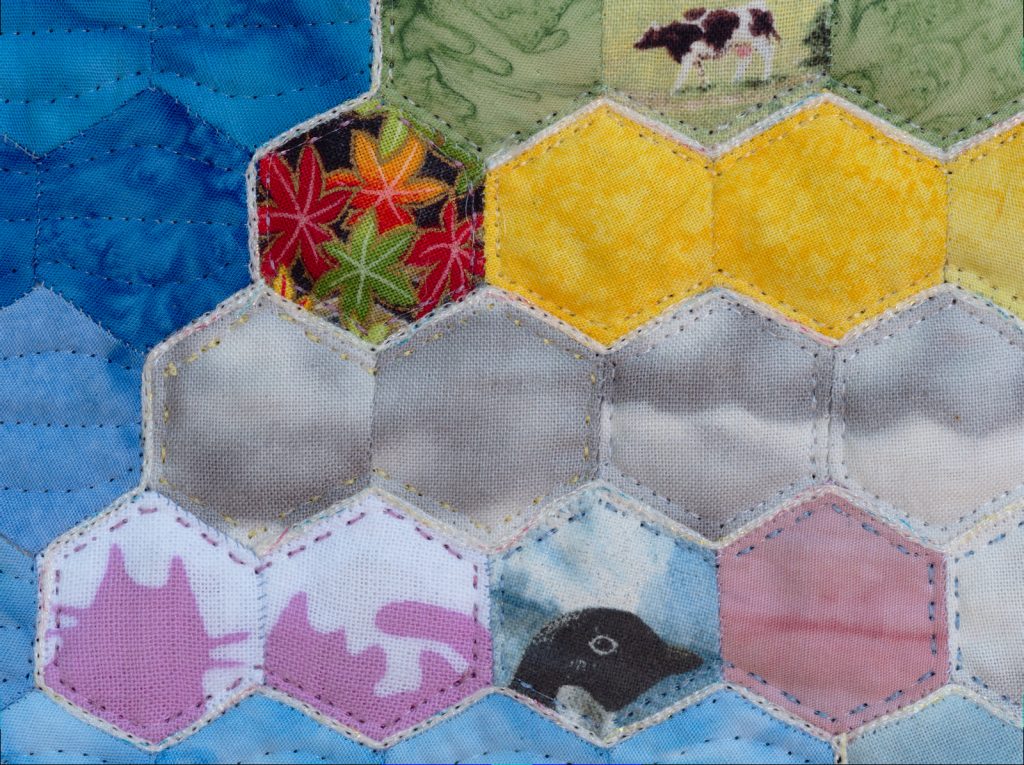
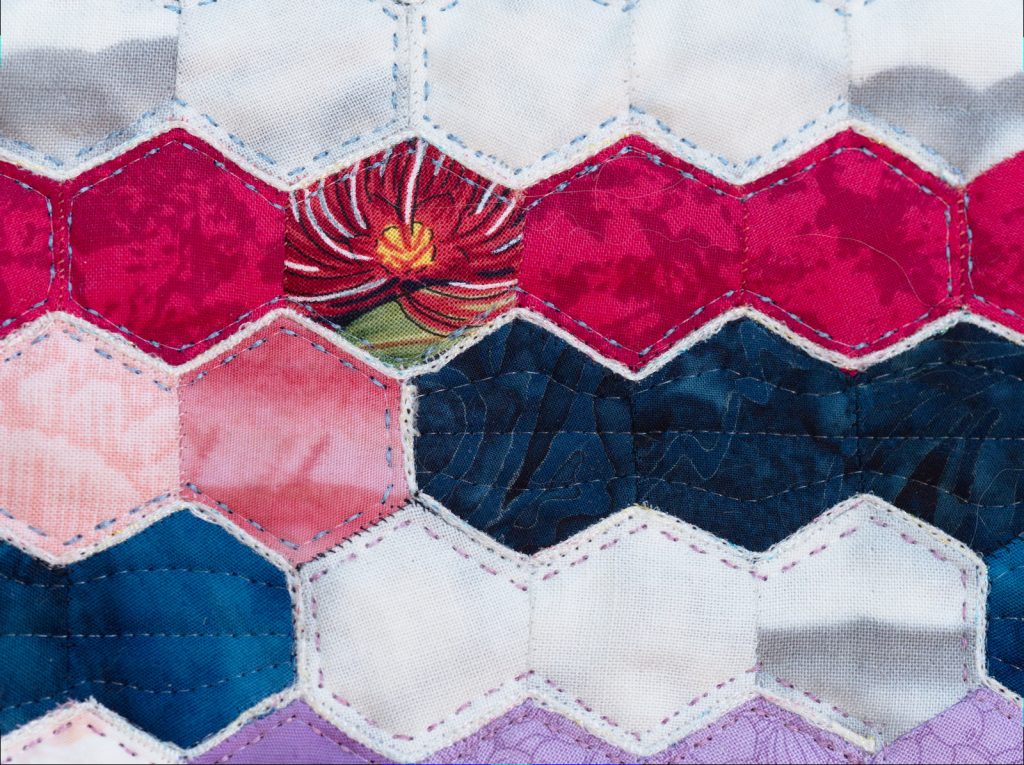
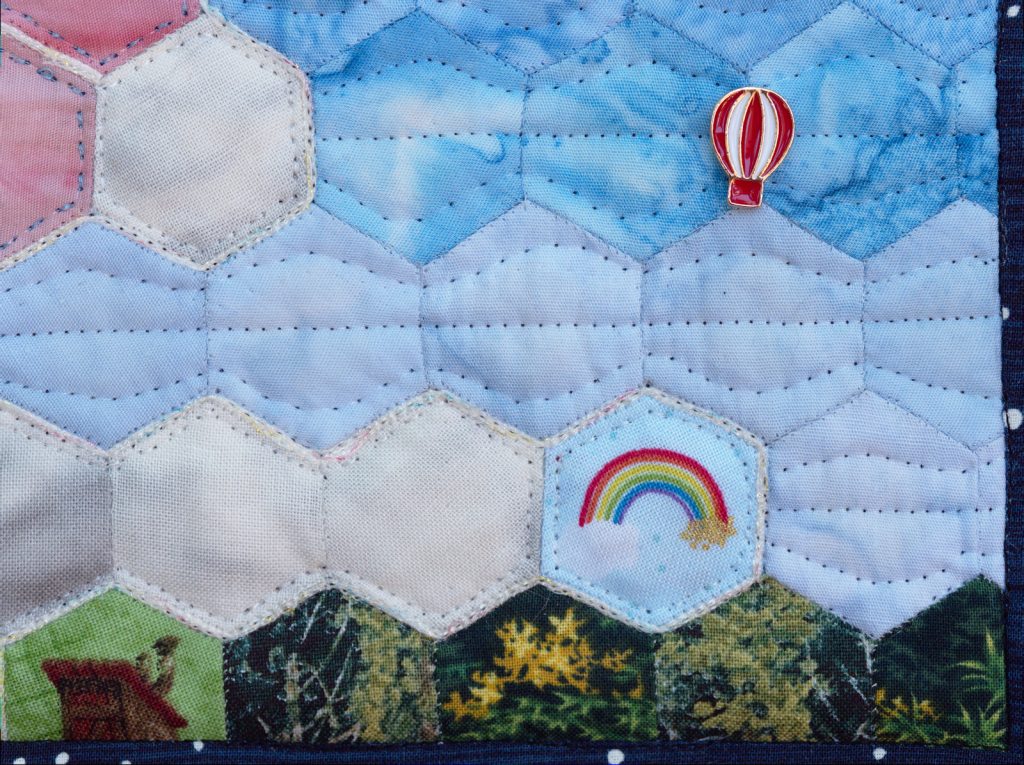
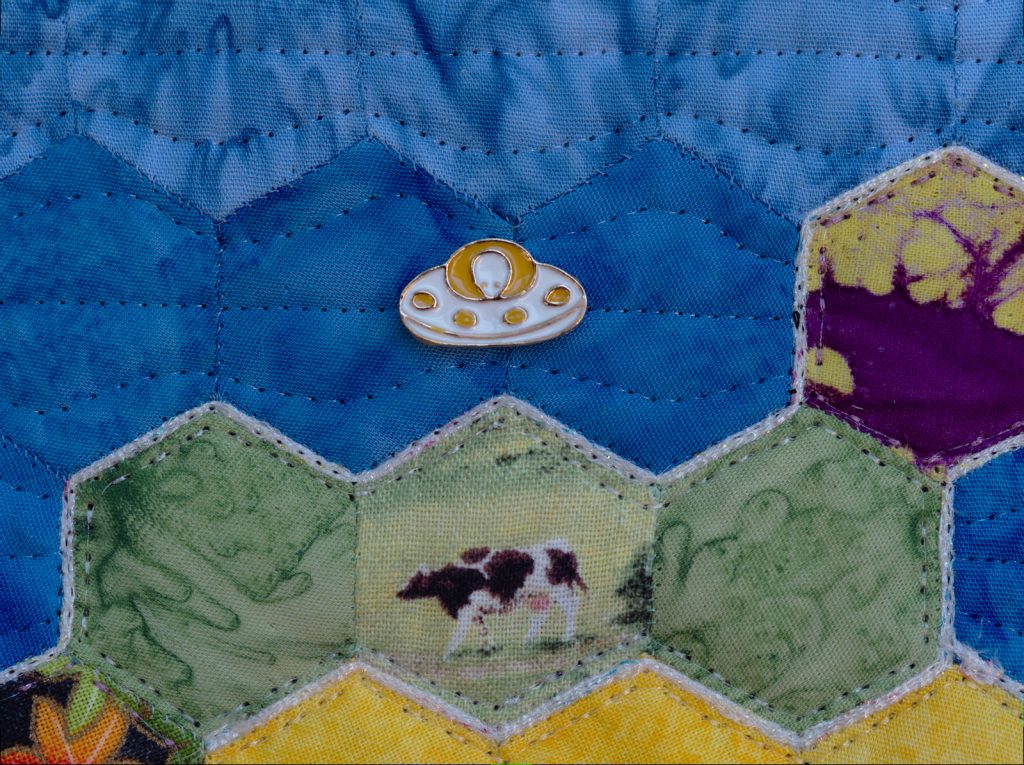
Finishing
Little enamel pins were scattered over the quilt to add to the sky illusion. The finished quilt measures 44 cm × 51 cm (17″ × 20″).
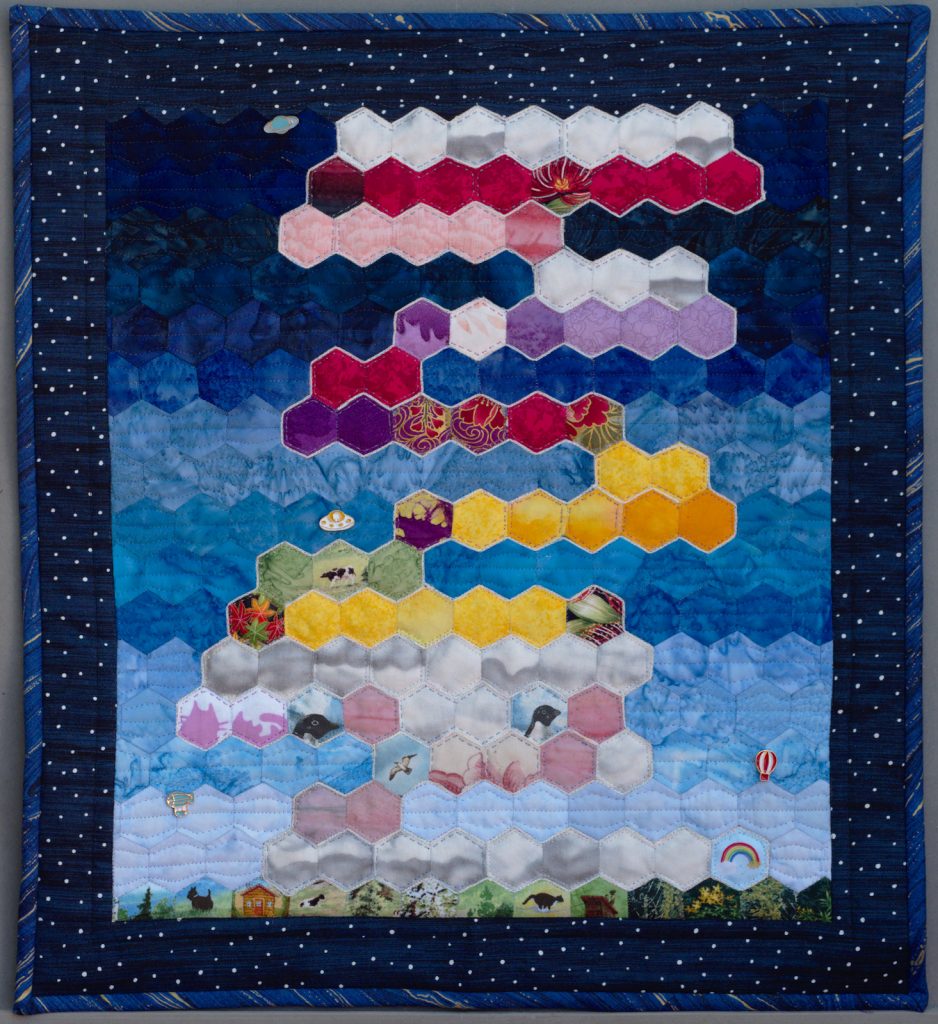
This is part 2 in a series of four.
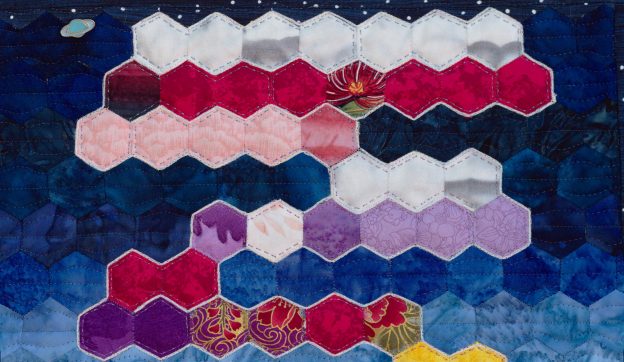
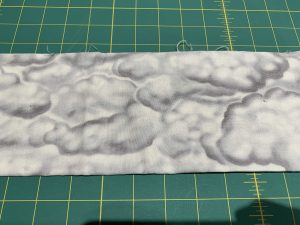
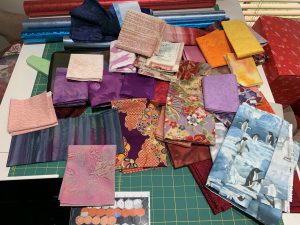
Leave a Reply